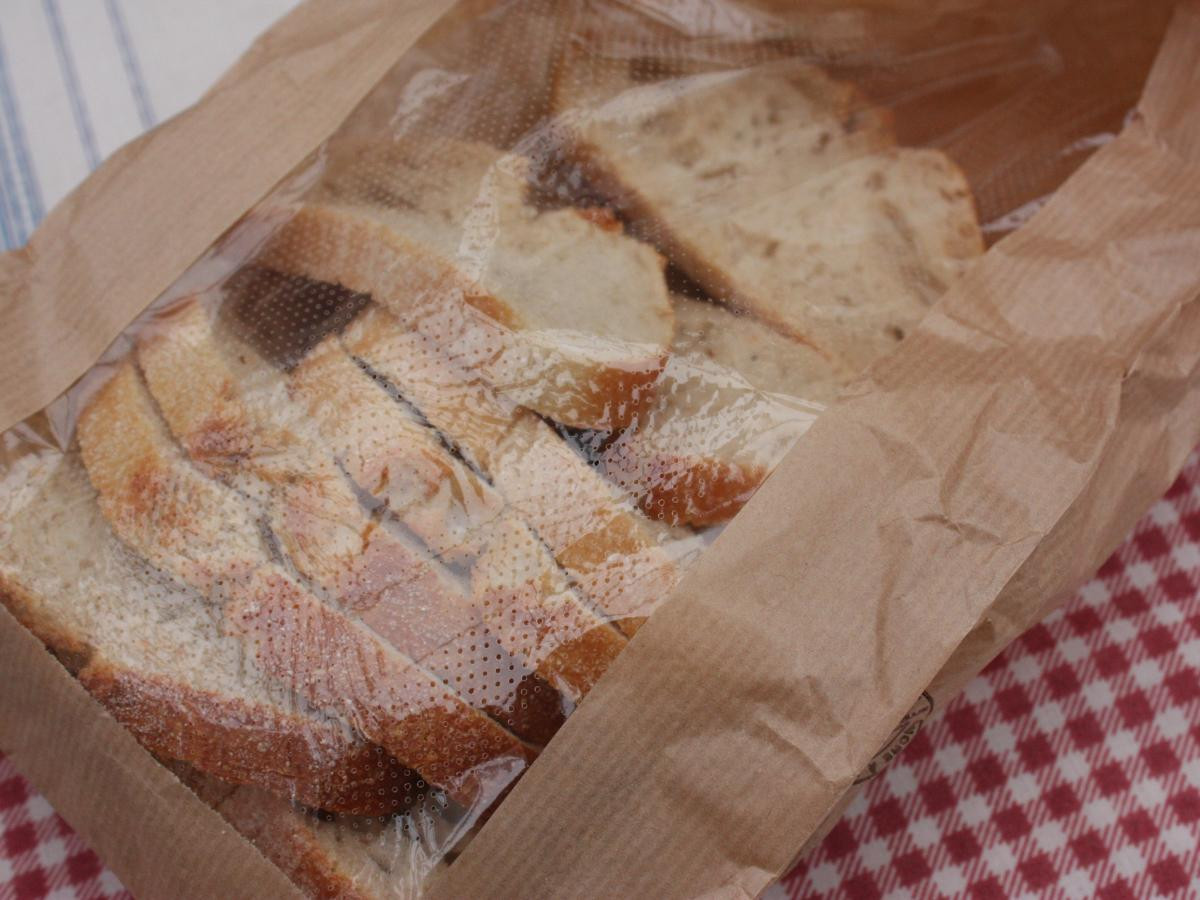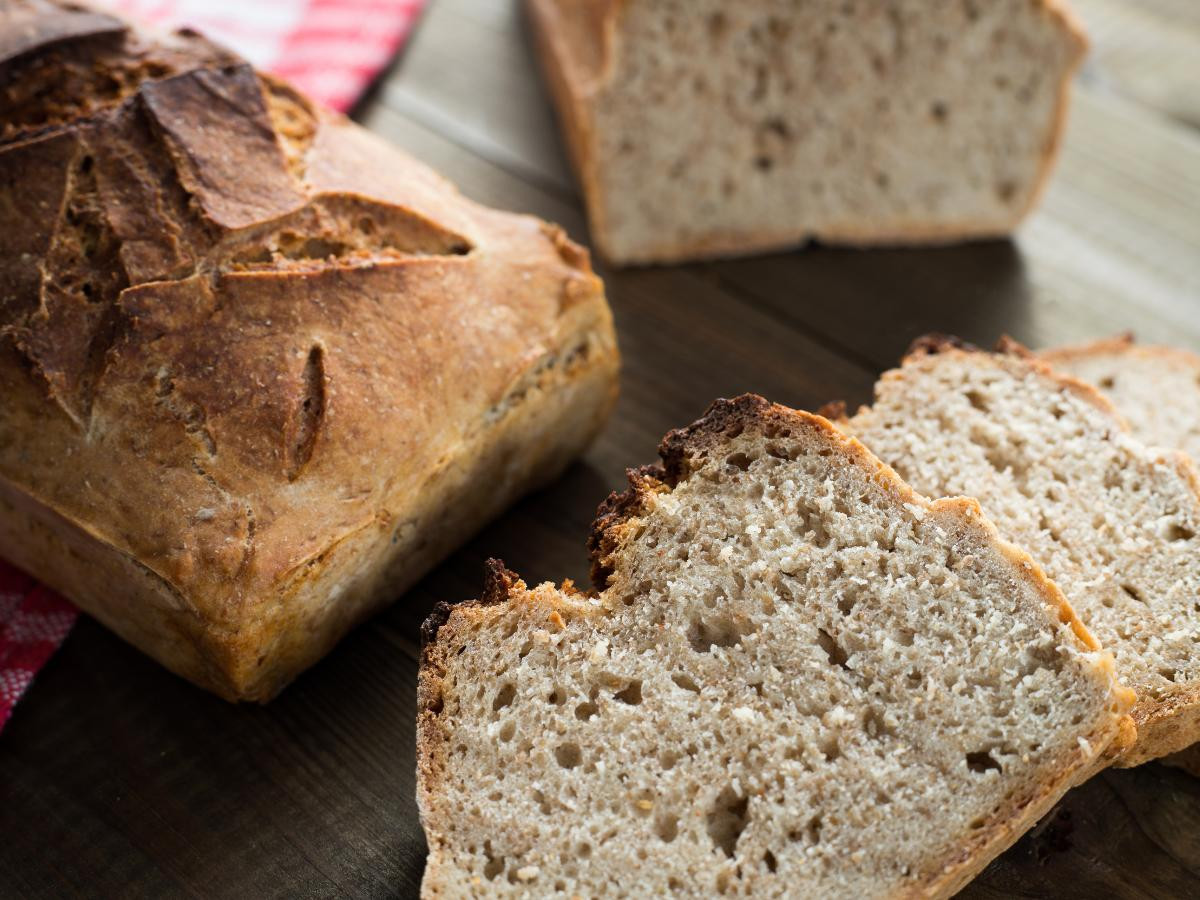Preserving the Crust: 9 Chef-Approved Tips for Storing Homemade Sourdough Bread
From the cozy embrace of a bread box to the secret life of your fridge, this article is your backstage pass to ensuring your sourdough steals the show every time with all The secrets from my kitchen to yours. – crispy crust and all!

Store Your Sourdough Loaf: Thank Me Later
After decades of culinary hustle, I’ve learned that magic happens after that initial bite. So, today, I’m peeling back the curtain on how to store sourdough bread, ensuring your sourdough loaves stay rockstars long after they leave the dutch oven.
This isn’t just a guide; it’s a backstage pass to sourdough perfection. Picture it as a chat with your kitchen-savvy friend who’s seen it all. I’m spilling the beans on nine game-changing storage tricks, from the zen cooldown to the buzzworthy world of a beeswax wrap.
What’s in it for you? No more sad slices or battles with mold.
Instead, revel in the joy of having your sourdough ready for impromptu sandwiches or cozy toasts whenever the mood strikes. Before we even start just let it be known we will not be using plastic bags, and please never let a plastic bag touch your precious loaf of sourdough bread.
So, join me on this flavorful adventure, where every tip is a step toward ensuring the best way to store your sourdough loaf and make sure it we keep it fresh, fabulous, and ready for its close-up. Be Warned though, after this there is no turning back. No more table top sourdough loaves or Freezer burn.
Table of Contents
Why Should You Store Your Sourdough Bread?

It’s not just about practicality; it’s about making your homemade sourdough stay as fabulous as day one. Here’s the lowdown on how to store sourdough bread.
Freshness That Lasts: Cherishing the Good Stuff
Why: Your sourdough bread is like a fine wine; it improves with time. Proper storage ensures that crisp crust and pillowy crumb stick around, so every bite is a celebration.
Bye-Bye Stale, Hello Flavor: Battling the Sneaky Air
Why: Air is the archenemy of freshness an the overall factor in your fresh bread drying out. Storing your sourdough is like giving it a fortress against staleness, keeping it as delightful as when it first left the oven.
Mold Be Gone: The Unsung Protector
Why: Sourdough loves moisture, and so does mold. Stash your perfect loaf in a cool, dry spot (think fridge or bread box), and you become a mold-fighting hero, ensuring safe and tasty slices stay fresh.
Easy Planning: Sourdough on Your Terms
Why: Not every day is a bread feast day. Slicing and storing lets you plan your sourdough indulgence, making it a friendly accomplice in your culinary adventures.
Time-Friendly Baking: Your Schedule, Your Bread
Why: In the world of sourdough, patience is key. Storing your homemade bread also lets you be the boss of your time, baking in batches so you always have a fresh supply without the daily hustle.
Transformative Magic: From Bread to More
Why: Stored sourdough isn’t just chilling; it’s a versatile sidekick. Revive stale slices, turn them into croutons or breadcrumbs – each loaf of store bread is a canvas for your kitchen creativity.
How Long Does Sourdough Bread Last Unrefrigerated?

Ah, the shelf life of sourdough bread – a question that has sparked many kitchen debates! Unrefrigerated, your freshly baked sourdough typically struts its stuff for about 2 to 4 days. Now, that’s assuming you’ve resisted the temptation to devour the whole loaf in one glorious sitting.
Picture this: the first day, you just pulled that fresh baked bread from the hot oven. Your sourdough bread is the star of the show, all crispy crust and chewy crumb. It’s still stealing the spotlight by day two, but you might notice a subtle shift.
Day three? Well, that’s when the texture dance starts to change – not necessarily a bad thing, just a different groove.
If you’ve managed to keep a slice or a cut loaf or two until day four, kudos! Consider toasting or reviving it in the oven to recapture some fresh-out-of-the-oven magic.
Remember, these are just guidelines – the actual expiration date depends on factors like humidity, room temperature, and the willpower of anyone near the bread.
So, let’s preserve and store your fresh sourdough loaf because stale bread is only good for bread crumbs and French toast. Baking sourdough bread and storing sourdough bread can be no easy feat, but I’m here to teach you how to properly store sourdough bread like a pro.
What Are The Best Ways To Store Sourdough Bread?
I’m here to show you my tips and tricks on how store sourdough bread published ensuring your freshly baked bread is as fresh as the day you pulled that bad boy out of the Dutch oven. The Ultimate breakdown of how to store sourdough bread is just a scroll below:
1. Cool Kids Keep It Cool

Explanation: Allowing your sourdough bread to cool properly post-bake is more than a moment of patience; it’s crucial to preserving its optimal texture and flavor. The cooling process allows the moisture to redistribute within the loaf, ensuring a harmonious balance between the crispy crust and the airy crumb.
How To:
Once your homemade sourdough bread emerges golden and tempting from the oven, resist the urge to slice.
Place it on a cooling rack, allowing air to circulate around the entire loaf.
Wait patiently for at least an hour before diving in.
Why It Works:
Proper cooling of your sourdough fresh made loaf minimizes the risk of condensation, preventing a soggy crust and maintaining the delightful crunch that makes sourdough exceptional.
2. Bread Box Bliss:

Explanation: A bread box isn’t just a charming kitchen accessory; it’s a sanctuary for your sourdough. Whether it’s made of wood or metal, bread boxes create an environment that strikes the perfect balance between retaining moisture and allowing air circulation, keeping your bread just right.
How To:
Invest in a quality bread box with good ventilation.
Once your homemade sourdough bread has completely cooled, place it inside.
Revel in the satisfaction of having a designated space for your prized loaves.
Why It Works:
The breathable atmosphere prevents the sourdough boules from drying out or getting too moist, maintaining its integrity and flavor.
3. Say No to Plastic, Embrace Paper:

Explanation: A Plastic bag might be fantastic for many things, but not for storing sourdough bread inside. Opt for the simplicity of a brown paper bag or a kitchen towel – these materials allow the sourdough loaves to breathe while protecting it from the elements.
How To:
Airtight Wrap your cooled sourdough in a paper bag or a clean kitchen towel.
Secure it loosely to maintain airflow.
Admire your bread’s cozy, rustic look.
Why It Works:
Paper absorbs excess moisture, preventing a damp crust while providing a protective barrier against rapid drying.
4. Cut Side Down, Wise Move:

Explanation: Ever wonder why your leftover bread seems less thrilling? Storing bread inside with it cut side down is the secret to preserving the magic. This method minimizes the surface area exposed to air, slowing the staling process.
How To:
Whip out the cutting board and knife. Place the cut side on your storage surface if you’ve sliced into the loaf.
Store in a cool, dry place.
Appreciate the art of preserving freshness one cut side at a time.
Why It Works:
Reducing exposure to air helps maintain the delightful contrast between the crust and crumb, ensuring each slice is a joy to savor.
5. The Cool Kid’s Fridge:

Explanation: When faced with the dilemma of devouring an entire loaf in one go or how to store sourdough bread, the fridge becomes your ally. While the cold environment might compromise the crust’s crispiness, it significantly extends the bread’s life without the risk of mold.
How To:
Once your sourdough has cooled, wrap it tightly in plastic wrap or place it in a sealed bag.
Store in the refrigerator.
Allow the bread to come to room temperature before indulging for the best texture.
Why It Works:
Refrigeration slows the staling process and inhibits mold growth, giving you more time to relish your sourdough bread.
6. Freeze, Don’t Fret:

Explanation: Life happens, and sometimes you can’t consume a fresh loaf in a timely manner. Freeze sourdough bread, allowing you to stash those freezing slices for future carb cravings without sacrificing quality.
How To:
Slice your cooled sourdough.
Wrap each slice tightly in plastic wrap or aluminum foil if you have no other choice, but I’d recommend a safe, healthy, sealed, airtight container.
Why It Works:
Freezing halts the staling process and keeps your sourdough bread in a state of suspended animation, ready to be resurrected with a quick toast.
7. Sunlight and Heat, Not Your Bread’s Friends:

Explanation: Your sourdough bread is a delicate flower that wilts under the harsh gaze of sunlight and the warmth of excessive heat. Keep it in a cool, dark place to maintain its mystery and magic.
How To:
Find a spot in your kitchen away from direct sunlight and heat sources.
Store in a bread box, pantry, or cool, shaded area.
Why It Works:
Reducing exposure to light and heat helps preserve the crust’s integrity and prevents premature staleness.
8. Tea Towel Tranquility: Wrapping in Comfort

Explanation: Tea towels, the unsung heroes of spills, can also work wonders for your sourdough bread. Embrace your cooled sourdough loaf in the comforting folds of a clean tea towel, securing it loosely for a breathable, cozy hug. This simple technique is a delightful way to keep moisture in check and maintain the freshness of your bread.
How To:
Gently wrap your cooled sourdough in a clean tea towel.
Loosely secure the towel for that perfect, snug fit.
Allow your bread to revel in the cozy embrace.
Why It Works:
Unlike a Plastic Bag, a Tea towel acts as a breathable guardian and a great way to store your sourdough bread, balancing moisture and freshness for your sourdough bread. It’s like giving your bread a spa day, ensuring it stays as pampered and delightful as the day it was baked.
9. Beeswax Wrap Wonder:

Explanation: As a sustainable alternative, beeswax wraps are a game-changer in sourdough storage. These eco-friendly wraps create a breathable seal, keeping your bread fresh while minimizing environmental impact.
How To:
Wrap your cooled sourdough in a beeswax wrap.
Seal the edges to create a breathable but protective covering.
Feel good about reducing plastic waste while preserving your bread.
Why It Works:
Beeswax wraps create a breathable barrier, preventing excess moisture and maintaining an ideal environment for prolonged freshness.
Conclusion: Sourdough Loaf Mastery Unveiled
How to Store Sourdough Bread? In the grand finale of our sourdough preservation saga, we’ve explored nine enchanting methods to keep your prized loaves fresh and fabulous. From the patient cool-down to the eco-friendly embrace of beeswax wraps, each technique is a unique chord in the symphony of sourdough mastery.
You’re now armed with the wisdom of a seasoned chef, understanding the delicate dance between crust and crumb. Leave Your plastic bags for groceries or garbage pails or use a plastic bag for anything but keeping your bread fresh. Whether you choose the cozy haven of a bread box or the sustainable magic of beeswax wraps, a linen bag or tea leaves, your sourdough bread will remain a culinary star long after it leaves the dutch oven.
Experiment, embrace, and find the method that suits your kitchen rhythm. Perhaps it’s the quick revival of a stale slice or the convenience of freezing before you store sourdough bread for future cravings. With these storage techniques, your sourdough bread adventures will be extraordinary.
So, here’s to future loaves that maintain their crispy allure, toasts that bring joy with every crunch, and the endless delight of freshly baked sourdough. Happy baking, my friends, and may your bread always be a celebration of flavor, freshness, and the artistry that is sourdough!
FAQ and Additional Information
What is the best way to store sourdough starter?
Storing your sourdough starter is crucial for maintaining its health and vitality. The refrigerator is your sourdough starter’s happy place. The cold environment slows fermentation, allowing you to keep it for an extended period without feeding daily.
How To:
1. Transfer a small portion of your active starter to a clean jar.
2. Cover the jar loosely to allow for some airflow.
3. Store it in the refrigerator, ideally towards the back where it’s cooler.
Why It Works: Refrigeration significantly reduces the frequency of feeding. It’s a low-maintenance method that keeps your starter healthy and ready for baking at your convenience. By refrigerating your sourdough starter, you’re creating a sustainable and convenient routine.
To revive it for baking, take it out, let it come to room temperature, and give it a couple of feedings to reawaken its yeast and bacterial activity. This method allows you the flexibility to bake on your schedule while ensuring your starter remains a lively and integral part of your sourdough bread adventures. Happy baking!
How do you keep sourdough from drying out in the fridge?
While stored in the refrigerator, preserving the moisture in your sourdough is crucial for maintaining its quality and taste. One effective method is to utilize an airtight container, providing a sealed environment that prevents the bread from drying. Ensure the lid is tightly secured to create a protective shield around the sourdough.
For an extra layer of defense, consider wrapping the cooled sourdough in plastic wrap instead of a plastic bag before placing it in the airtight container. plastic bags tend to have tiny wholes and splits. A plastic bag can also hold harmful toxins and chemicals. If you are taking the time to bake sourdough bread, consider taking the time to store sourdough bread with the same level of love.
This additional barrier minimizes moisture loss and enhances the bread’s freshness. If you prefer an eco-friendly approach instead of a plastic bag or plastic bags, placing the sourdough in a breathable bread bag or covering it with a clean kitchen cloth before storing sourdough bread it in the airtight container can be an effective strategy.
This allows the bread to retain moisture while still permitting some breathability. To further minimize moisture loss, consider slicing your sourdough bread only when needed, as a whole loaf and not sliced bread tends to retain moisture better than pre-sliced pieces. Another Quick way to store and keep it fresh in the futire you can freeze sourdough bread in a linen bread bag or paper bag (not a plastic bag) .By employing these techniques, you ensure that each slice pulled from the refrigerator is a testament to the freshness and quality of your sourdough bread. Happy baking!







